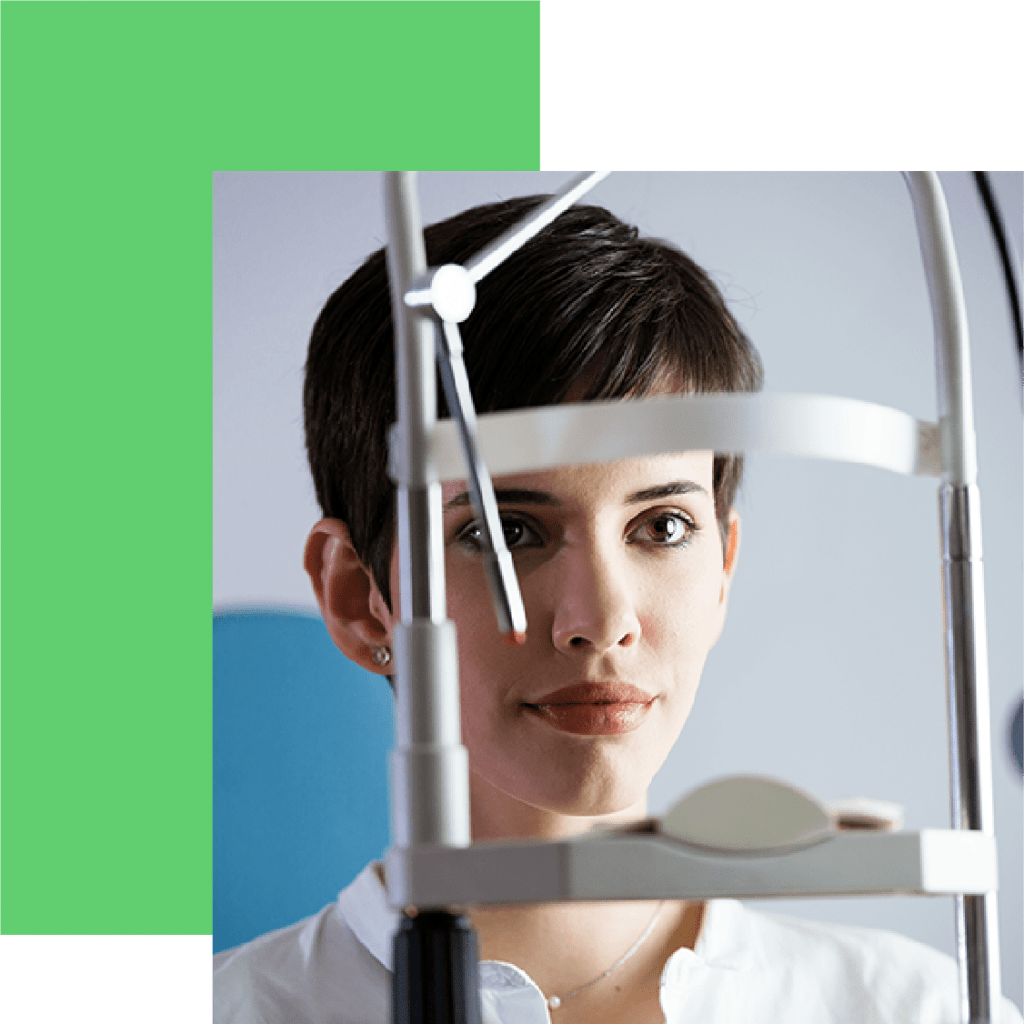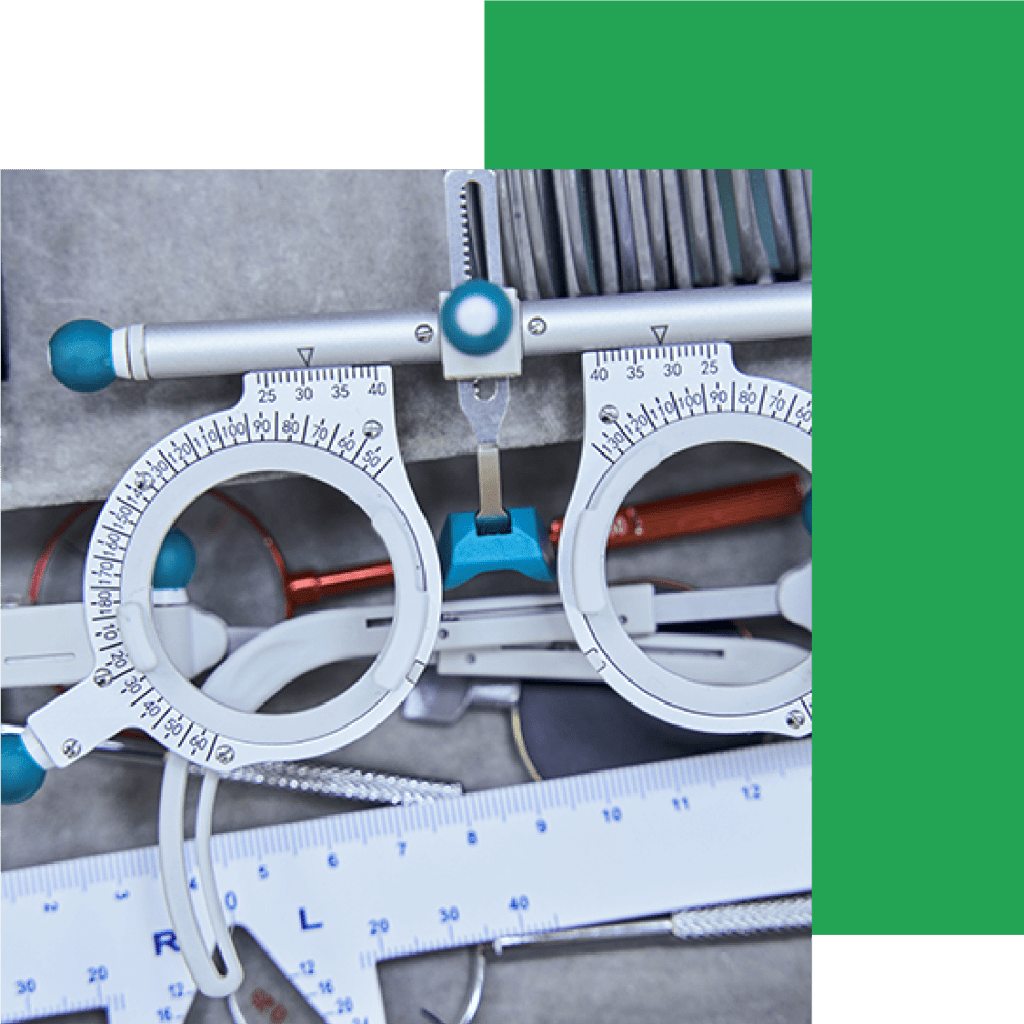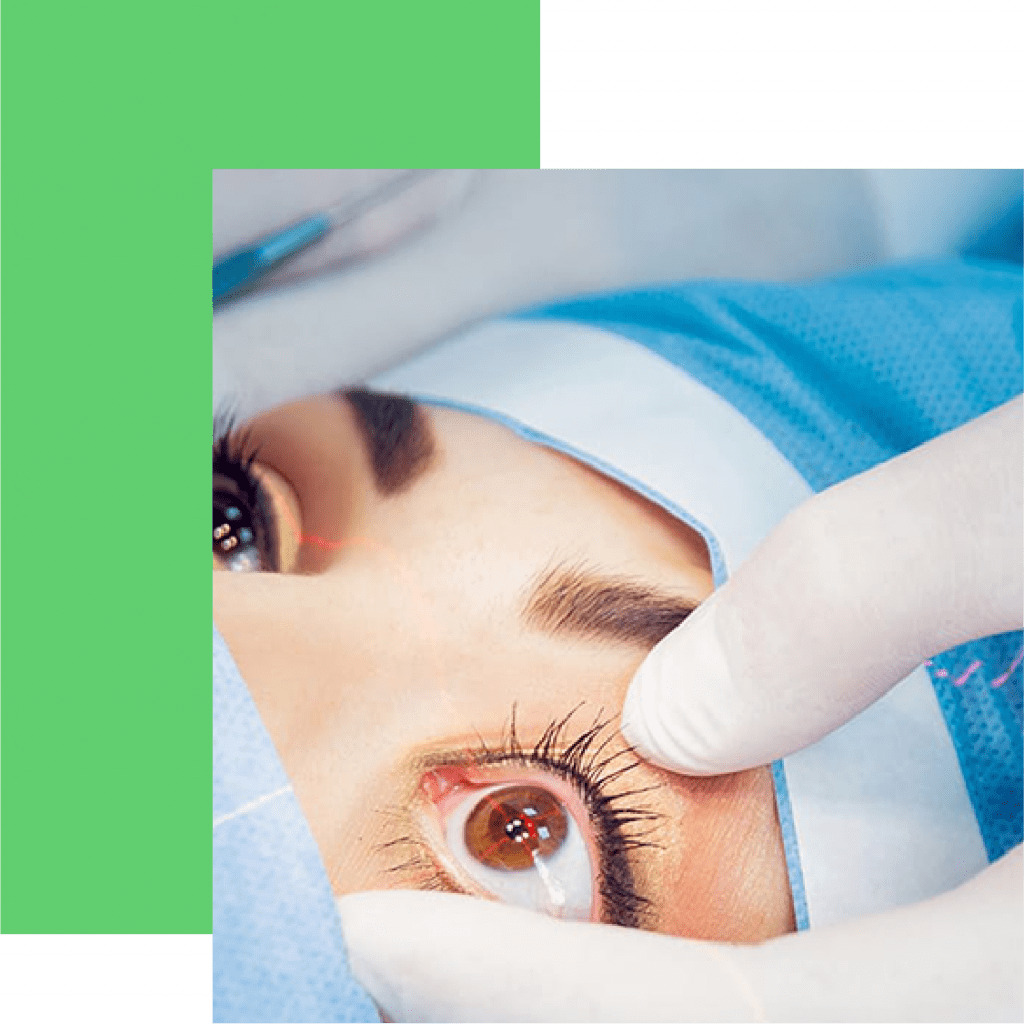
EYE ILLNESSES
Congenital vision defects
There are various vision errors. With a normal-sighted eye, the cornea and lens match exactly with the length of the eyeball. These measurements are unequal with defective visions, and the focus point lies before or behind the retina.
Short-sightedness (myopia)
Patients, who have myopia, have an eyeball that is too long or with too much refractive power for its length. Therefore the incident light rays meet before the retina, which leads to a blurred representation of objects in the distance.
Long-Sightedness (Hyperopie)
Patients suffering from long-sightedness have an eyeball that is too short or not enough refractive power for its length. Therefore, the focal points of the incident light rays are behind the retina.
Corneal curvature (Astigmatism)
With astigmatism, the corneal surface is not curved evenly but irregularly curved. This is particularly difficult because the light rays are refracted in different directions and do not unite to form a focal point. This leads to a distorted representation.
Age long-sightedness (presbyopia):
Most people develop the so-called age-related Long-sightedness (presbyopia). This is generally corrected using reading glasses or bifocals. However, this refractive error arises not from a change in the eyeball length but by a stiffening of the eye lens. Therefore their ability to distinguish distance and nearness is lost.
Cataracts:
Cataracts mostly develop from the age of 60 and are often referred to as a senile cataract. But young people may also be affected by cataracts. Worldwide, the disease causes about 40 percent of all blindness. To allow an early diagnosis, you should go for an eye examination regularly from the age of 40 For some unknown reason, the structural proteins in the lens change and crystallize. As a result, the crystal clear eye lens becomes cloudy, obscuring your vision. The incident light cannot shine through and becomes scattered. Therefore no more sharp images can be formed on the retina.


Macular degeneration (MD)
One of the most common visual impairments at an advanced age is age-related macular degeneration (AMD), which can occur in two forms: dry and wet macular degeneration. With this disease, the nerve cells are destroyed in the area of sharpest vision (the macula). With dry MD, visual acuity decreases slowly but steadily. To compensate for the effects of the disease, magnifying vision aids such as magnifiers, screen readers, etc. can be used. The wet MD occurs considerably faster than the dry MD. Thanks to new drugs (VEGF-inhibitors), the disease can be stopped.
Diabetic Retinopathy:
With the substantial increase in the disease diabetes mellitus, it inevitably also increases damage to the eye (diabetic retinopathy). With constantly elevated blood glucose levels, fat and protein substances are deposited in the eye’s delicate vessel walls, which are fragile and can burst. This is particularly noticeable for those affected by visual field defects. Treatment of visual impairments is only possible to a very limited extent via laser and cryotherapy. Therefore, preventive measures are of the highest priority in this case:
• Optimal control of blood sugar levels.
• Blood pressure readings of 120/80 mmHg
• Do not smoke!






